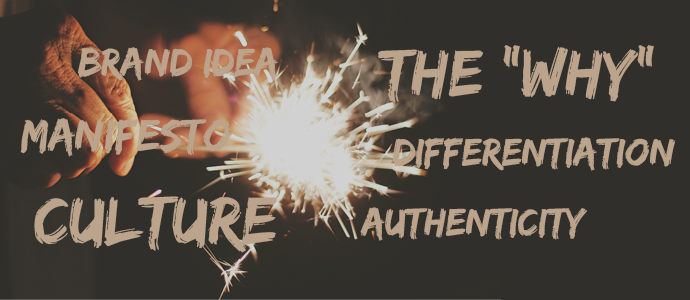
I’m a people person. It’s through relationships and one-on-one communication that I feel I am most effective. So of course, one of my favorite parts of the creative branding process is the meeting with an organization’s CEO and key players during the discovery phase. Asking some important questions to key individuals reveals so much about the organization and helps determine the creative choices we will make during the rebranding process. Listening, learning, watching interactions, and observing the culture—all of these actions inform and inspire how we will develop strategic recommendations and ultimately, brand design and messaging.
Organizations are complex—as is the branding process. Today, more than ever, successful branding is not just what you as an organization decide it to be, it’s also about the inner workings, which are more and more transparent, and the feeling, perception or essence that a customer feels about your organization, product or service.
It used to be that a few people would decide what they wanted the brand to be. “Make me look like ‘Company A,’ but better—we want to position ourselves this way and experience growth, so make us look bigger than we are.” And then, lots of advertising dollars would be spent to build the brand.
Today, it’s very different. What worked even five years ago, won’t necessarily work today. There is a gap between the strategic thinking or best theories about branding and the day-to-day reality of making it work. We know that you can’t separate brand from visual identity or marketing and communications strategies— or website or customer service practices. But it’s far more intricate than that. Previously, branding might have been described as a one-way road–a company broadcasting its message over and over and their audience receiving it. Today, branding is not simply messaging received. Your audience is now an active participant with whom brands create a dialogue. This is why branding is an ongoing effort with many facets.
The world is considerably more connected and businesses must be noticeably more transparent. All the money and planning in the world cannot save a brand with disgruntled employees, poor practices or unhappy customers. Social media, blogs, and ratings sites can have near immediate (and harsh) impact. It’s been less than 24 hours from the 2015 Super Bowl, and yet decisions have been made on which brands “got it” and which “did not.” A poor customer experience can turn into a nightmare overnight with tools like Twitter and Facebook. Whether it’s positive or negative, companies must anticipate these almost immediate contributions from their audience and learn how to best handle an influx of discussion around their brand. And it’s not just an issue for big businesses and brands. Small businesses are equally, and in some ways, even more vulnerable.
But how can you be assured that your company can handle this nuance in brand management?
The big idea.
Some people call it their brand manifesto. Some people say it is the culture. Simon Sinek would call it “the WHY.” Some say it is conscious capitalism that looks at the 3Ps (people, profit and planet) or the part of your brand focused on the greater good. I call it the big idea. What is that thing about your brand that makes you different and why does it matter? What are the “must haves” or core values on which your brand is based, that are also embraced and conveyed by your employees? What do you want your customers to expect? All of these things contribute to the big idea.
Zappos approaches this from a standpoint of culture. They believe that if they get the hiring process right, everything else will fall into place. They look for relevant experience, technical ability and fit within the team, but then they do a separate set of interviews purely focused on culture fit.
Zappos is so confident in their process, which involves a special four-week training program, at the end of which they offer to pay everyone $2000 to quit (in addition to paying for the time they’ve worked), because they want to make sure employees are there for more than just a paycheck.
Zappos has formally defined their culture in terms of 10 core values:
1) Deliver WOW Through Service
2) Embrace and Drive Change
3) Create Fun and A Little Weirdness
4) Be Adventurous, Creative, and Open-Minded
5) Pursue Growth and Learning
6) Build Open and Honest Relationships With Communication
7) Build a Positive Team and Family Spirit
8) Do More With Less
9) Be Passionate and Determined
10) Be Humble
Over the years, some of the terms have changed — core values, culture, impact — but it all comes down to differentiation, authenticity and impact. How did you come to be where you are? What’s your story? What is it that you do, but more importantly, why? What impact does (or do you want) your brand have (to have) on your customers, your employees, your stakeholders and the world?
Having the chance to talk about the big idea — the difference your company wants to make in the world, and the small details — the stories about where the authentic differences in your product/people/service come from, is so important in how we will help you present your brand to the world. Learn more about our rebranding process here.
— Wendy Baird, principal and president

